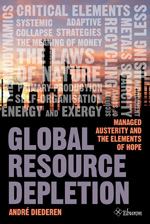Like I said yesterday, I am not going to post about high gasoline prices and the middle east unrest because they are both concoctions. Muammar is just being the despicable killer that he always has been. Gas prices have nothing to do with market conditions. The head of the National Association of Oil and Gas Producers said today, the problem is not supply. There is plenty of oil available today, it is the money (speculators) flooding the market that is driving price. So the next time you complain about gas prices and someone says, well it is because we are so dependent on foreign oil. Tell them they are full of it. In the mean time.
http://www.illinoistimes.com/Springfield/article-8406-the-greening-of-springfield.html
Thursday, March 3,2011
The greening of Springfield
LLCC leads the way to renewable energy
Welcome to the most eco-friendly home in Springfield. You’d never guess the carpeting is made of recycled plastic grocery bags, or the bathroom countertops come from recycled cardboard and paper. The speckled rubber flooring of a workroom consists of recycled tires, and the simulated wood deck is actually recycled plastic soda bottles. The place simply appears to be the beautifully designed home of affluent owners. The only clue to their commitment to the environment are the solar panels on the roof.
The three-year-old house on Spaulding Orchard Road has a passive solar design with a thermal wall rising above gorgeous dark cherry flooring of (hybrid) eucalyptus and other sustainable woods. It was the highlight of a tour given by Bob Croteau for a recent Lincoln Land Community College workshop on renewable energy. An energy auditor with City Water Light and Power who has been involved with solar power since the 1970s, Croteau believes the season has finally arrived for green technology in Springfield. “I used to be able to keep track of all the renewables, but so many are springing up everywhere now, I can’t keep track of them all.”
The tour included a stop at the Southwind Park visitors center, the first building in Springfield to be LEED-certified at the highest platinum level (Leadership in Energy and Environmental Design). When it received certification in December, Erin’s Pavilion, as it is known, was one of only 209 nonresidential buildings in the world with platinum status in the new construction category. It will soon add a wind generator to its solar panels and 15 geothermal heat pump systems. The Capital Area Career Center has an array of solar panels that track the sun throughout the day as well as throughout the season. At 12 kW, it was the largest solar installation in Springfield until a year ago when a 14 kW array went up on the Fit Club South.
:}
This a really long article so go to the IT and read it. More tomorrow.
:}







